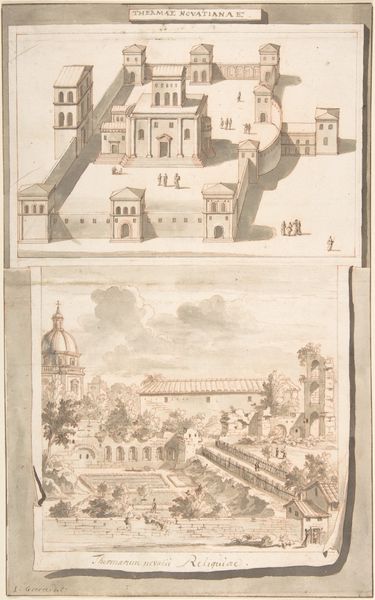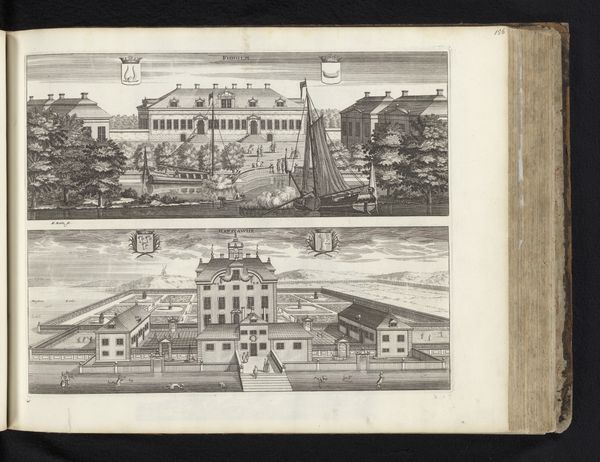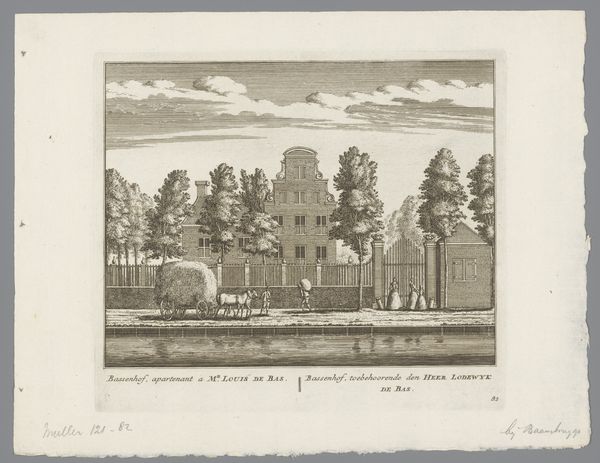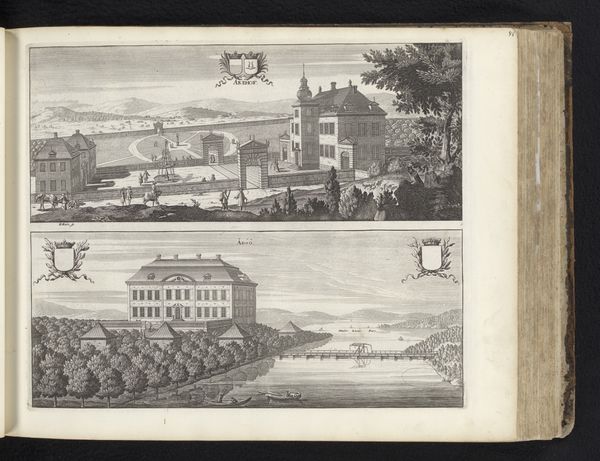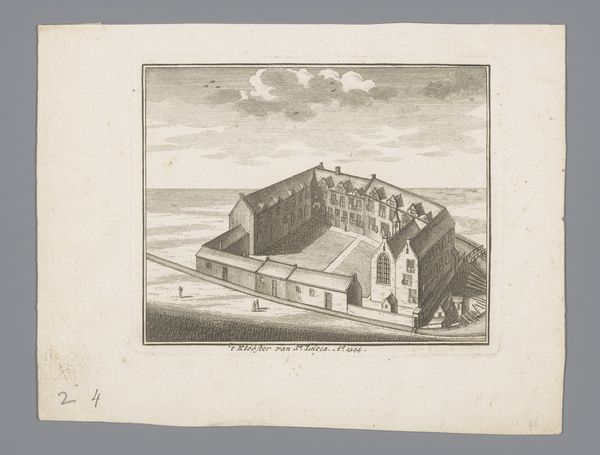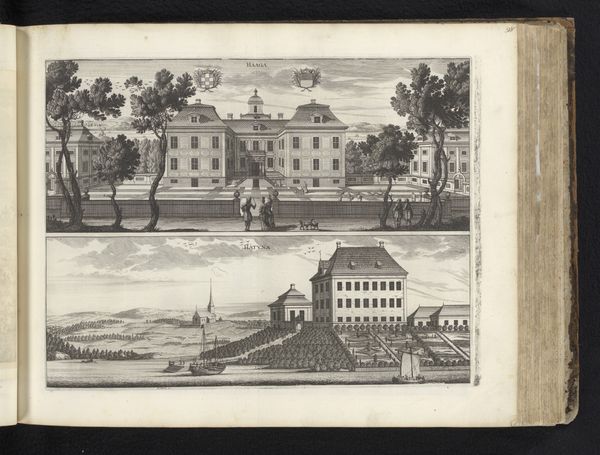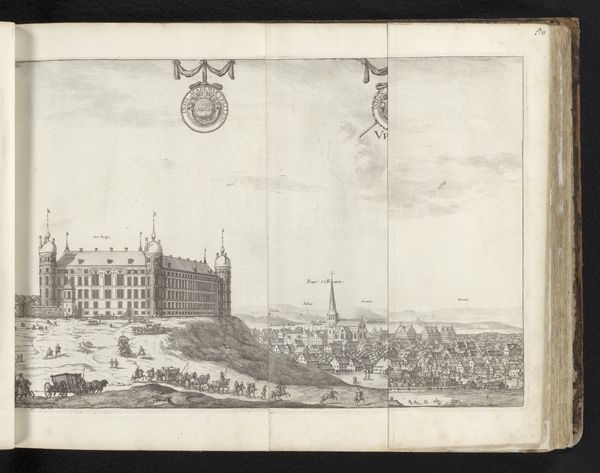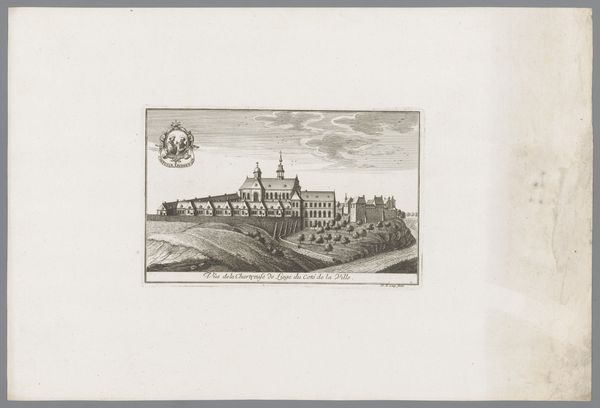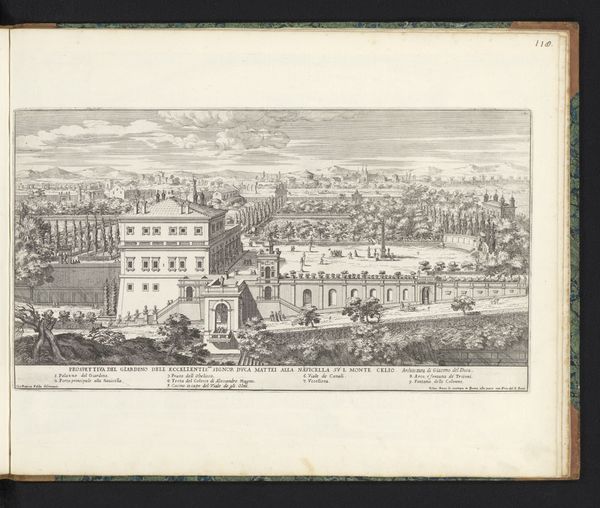
drawing, print, etching, engraving, architecture
#
drawing
#
baroque
# print
#
etching
#
cityscape
#
engraving
#
architecture
Dimensions: height 155 mm, width 96 mm
Copyright: Rijks Museum: Open Domain
Curator: This print, created by Roeland van Leuve in 1723, presents us with "Tekstblad bij boekillustratie," which translates to Text Sheet with Book Illustration. It employs etching and engraving techniques. What strikes you about it initially? Editor: It has a formal rigidity that I find initially distancing. The architecture is meticulously rendered, almost obsessively, but the scene feels airless. I wonder, is this precision intended to communicate power, perhaps? Curator: The precision, yes, and the layering of imagery speaks volumes. Look closely at the different architectural renderings - exteriors and interiors – juxtaposed with heraldic shields. This arrangement underscores power structures, connecting civic grandeur with aristocratic lineage. Editor: That juxtaposition makes me think about the means of its production and consumption. Was this image widely accessible? The fine lines of the etching and engraving must have demanded skilled labor. What were the social implications of such specialized crafts in the Baroque period? Curator: Precisely. The creation of such images was often tied to specific political and social agendas, acting as a form of visual propaganda, bolstering claims of authority. The architectural depictions, rendered in this very detailed manner, provided not just a view but also a representation of the city as an entity controlled and managed. We should examine the implications of "cityscape" and who and how one is allowed to circulate within it. Editor: And how was the labor divided? Were women involved? Where were these materials sourced? What about accessibility? As "illustration" this feels deliberately exclusionary given that few could have read at the time, limiting engagement beyond the educated or affluent elite. Curator: Such an intersectional lens complicates and enriches the experience and, potentially, politicizes this image from a perspective attuned to these historical exclusions and privileges. Thinking of our audience, let’s consider the layered contexts it activates, both in terms of class, accessibility, and power, so it truly becomes more than a simple cityscape from 1723. Editor: Right. For me, examining the material process allows us to see beyond surface appearances and consider the role that materiality and the mode of creation play in communicating status. It's a reminder that these buildings, even in two dimensions, represented very real labor, power, and, inequality.
Comments
No comments
Be the first to comment and join the conversation on the ultimate creative platform.
